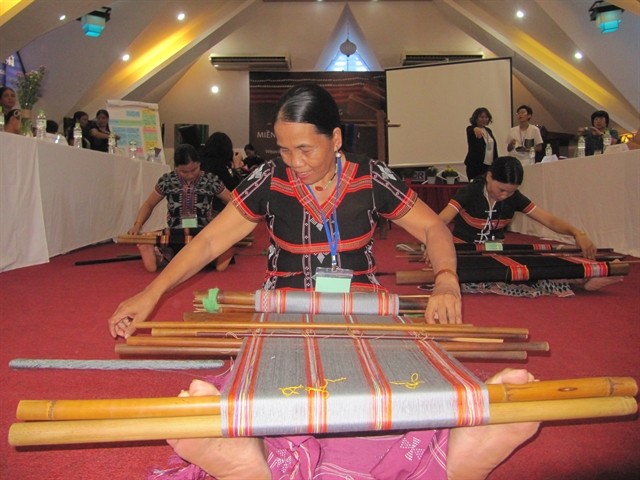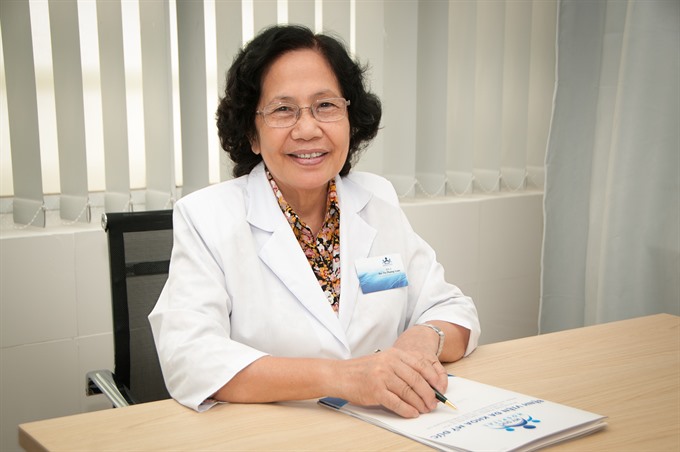 Inner Sanctum
Inner Sanctum

Professor Nguyễn Thị Ngọc Phượng, 74, former director of Từ Dũ Obstetrics Hospital in HCM City, was the first person in Việt Nam to offer a fertility treatment in which embryos are introduced directly into the uterus, called in vitro fertilization (IVF).
 |
| Professor Nguyễn Thị Ngọc Phượng |
Prof Nguyễn Thị Ngọc Phượng, 74, former director of Từ Dũ Obstetrics Hospital in HCM City, was the first person in Việt Nam to offer a fertility treatment in which embryos are introduced directly into the uterus, called in vitro fertilisation (IVF). She has made other contributions as well to obstetrics and gynaecology in the country.
She has published many research articles on the deleterious health impact of Agent Orange used as defoliant by the US forces during the war in Việt Nam on the Vietnamese people, including the impact of toxic chemicals on reproductive outcomes and dioxin-induced risks to pregnancies. She has also studied the health status of post-menopausal women and suggested measures to enhance their quality of life.
Phượng has set up a pregnancy care network to promote quality births for women in remote areas, and has provided training for rural ethnic midwives in the Central Highlands who use their own language to educate people about reproductive health care.
The Government honoured Phượng as "People’s Physician". Gia Lộc speaks to her about her sterling achievements.
Inner Sanctum: Why did you insist on bringing IVF to Việt Nam?
I have worked as a obstetrician and gynaecologist for a long time. I met couples who could not give birth. Of them, women were suffering much. They were blamed for all the faults of the infertility. In these cases, the husband’s family often prompted him to divorce his wife.
As a woman, I sympathised with them very much. I wanted to treat them effectively and help them have children.
When I was sent abroad to learn about family planning, I read documents about the world’s first test-tube baby Louise Brown at England’s Oldham General Hospital on July 25, 1978.
In 1984, I worked in Thailand. At that time, I visited a hospital which had prepared facilities to open a deparment for IVF. I had positive thoughts that the Thai hospital could do this technique. Vietnamese hospitals would be able to do it some day, too.
However, I felt it would be difficult because Việt Nam was too poor to have US$3 million which the Thai hospital spent to establish this IVF deparment.
After visiting the hospital, the deparment’s chief asked me when Việt Nam would perform IVF. I did not hesitate to say that Việt Nam would do it, but I did not know when.
Inner Sanctum: What was the process needed to introduce IVF officially in Việt Nam?
In 1990, I became director of the Từ Dũ Obstetrics Hospital. I told the hospital’s board of directors about testing machines which could be used to carry out IVF at the hospital.
At that time, it took time for testing. Because of no testing machines, the hospital’s staff took blood samples and sent them to C Hospital (now the National Hospital of Obstetrics and Gynecology) in Hà Nội. And then, these samples were sent to the World Health Organisation Collaborating Centre in Singapore for testing. It took at least one month for Từ Dũ Hospital to get testing results.
That was too long to wait for results for IVF treatment. Thus, it was very important to buy testing machines. Because of lack of money, I asked a medicine equipment company to sell the machines by installments. The hospital paid $2,000 each month.
The ultrasound division had to be improved because ultrasound provides information about the ovary and uterus. It also helps detect whether there are tumours and how many eggs exist.
In 1984, I was invited by the Việt Nam-Germany Friendship Association to go to Germany to talk about Agent Orange. When I came back to Việt Nam, I asked for donation of two abdominal ultrasound machines for Từ Dũ Hospital.
However, they were not sufficient to perform IVF. It was very necessary to have ultrasound transducers. So the hospital continued to buy them on hire purchase.
In 1994, I was sent to France to present my PhD thesis. It was fortunate that the University of Nice in France invited me to work as a professor for one year. I was paid a salary of FRF16,000 (US$3,000). I saved most of the salary to buy machines to set up an IFV department at Từ Dũ Hospital and send the hospital’s young doctors to France for training in IVF techniques.
Everything, including equipment and human resources for performing IVF, was available in 1997. The hospital struggled to get approval from the Ministry of Health. I chose 37 women who met standards for receiving the technique.
On August 19, 1997, the first five embryos were transferred to the uterus of five women. Two weeks later, 32 more women received embryos.
Inner Sanctum: How did you feel at that time?
I felt very worried and was afraid of failing. If I had failed, IVF would not have continued in Việt Nam.
I began to have a lot of stress and palpitations. After two weeks of transferring embryos to uterus, doctors of the hospital’s IVF team and I called each of these women to ask whether they were pregnant. Whenever I heard that they were not, I got more and more nervous. During that time, my hair became grey. Luckily, 12 of the 37 women got pregnant.
However, the stress did not stop while monitoring these pregnant women. One of three pregnant women, whose first due date was on April 30 in 1998, had a foetus with a heart that failed many times the night before the due date. I called the city Department of Health’s leaders to ask for approval to perform surgery to save the foetus. If not, the foetus could have died.
When the first test tube baby, Phạm Tường Lan Thy, was brought out of the hospital’s labour ward on April 30, 1998, I cried with happiness, but my stress and heart palpitations continued.
Inner Sanctum: Can you assess your achievements in IVF in Việt Nam?
After 20 years of development, IVF in Việt Nam is well known among many patients and doctors in other countries. More and more couples from America, France and others as well as overseas Vietnamese come to Việt Nam for IVF treatment with the hope of having children because the country’s success rate is nearly 50 per cent, while the price is cheaper than hospitals in their home countries.
Moreover, doctors of many countries come to Việt Nam to learn IVF techniques. Doctors at IVF centres in the country have performed the world’s most advanced techniques. They have also been invited to provide assistance in the establishment of IVF centres in many countries.
Twenty-four IVF centres have been built throughout the country. I have witnessed the development in quality and quantity. However, I still want each province and city to have one IVF centre so that we can offer convenience in treatment for infertile couples and reduce other costs.
Moreover, women now do not have to leave their family for a long time for treatment. If they go to the city for treatment, it takes only one or two months to leave their family for one treatment period.
IVF doctors are mostly young. They have good expertise and are ready to share experience with each other. They are studious in scientific research. Many of them are invited to be speakers at international conferences.
The latest achievement is a study, published in the prestigious New England Journal of Medicine, with the title IVF Transfer of Fresh or Frozen Embryos in Women without Polycystic Ovaries, which was conducted by Dr Vương Thị Ngọc Lan of the University of Medicine and Pharmacy in HCM City and her colleagues. VNS




